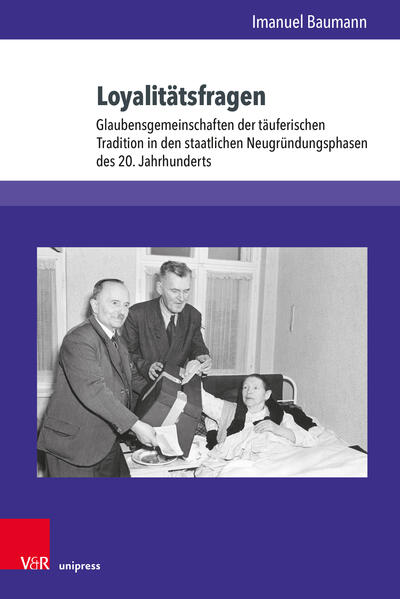
Zustellung: Mo, 16.12. - Mo, 23.12.
Versand in 6 Wochen
VersandkostenfreiBestellen & in Filiale abholen:
Täuferische Freikirchen zwischen Demokratie und Diktatur im 20. Jahrhundert
Für das historische Täufertum war religiöser wie gesellschaftlicher Nonkonformismus und die Konfrontation mit den Herrschenden kennzeichnend. Dieser Band zeigt, wie sich Glaubensgemeinschaften aus der »täuferischen Tradition« (Mennoniten, Baptisten, Bruderhof) und die »Obrigkeit« in den staatlichen Neugründungsphasen des 20. Jahrhunderts in Deutschland zueinander positioniert haben. Entlang spezifischer Interpretationsachsen werden freikirchliche Wahrnehmung und religiöse Deutung der jeweils neuen Staatsform untersucht, die staatlichen Freiheitserweise und Loyalitätsforderungen an die Glaubensgemeinschaften um 1919, 1933 und 1949 analysiert sowie die Einstellung zu Wehrpflicht und Eidverweigerung in längerer Perspektive betrachtet. Since the days of the Reformation, various free Protestant churches have evolved alongside the established churches in dissociation from and conflict with mainstream society. In the process, their members also resisted the authority of the state to the extent that it restricted the free practice of their faith. Against this background, this volume inquires into the changes and continuities in state action vis-à-vis the free churches on the one hand, and the free-church attitudes and modes of behaviour towards the state on the other. The analysis is deliberately limited to the phases of upheaval around 1918, 1933 and 1949. These years marking changes of political system each generated their own specific set of challenges with regard to the definition and calibration of the relationship between the free churches and state authority. The study concentrates on the free churches that - in different ways - regarded and regard themselves adherents to the "Anabaptist tradition" (Mennonites, Baptists and the Hutterite Bruderhof).
Mehr aus dieser Reihe
Produktdetails
Erscheinungsdatum
08. März 2021
Sprache
deutsch
Seitenanzahl
475
Reihe
Kirche - Konfession - Religion, Band 078
Autor/Autorin
Imanuel Baumann
Verlag/Hersteller
Produktart
gebunden
Abbildungen
mit 5 Abbildungen
Gewicht
816 g
Größe (L/B/H)
31/165/235 mm
ISBN
9783847112181
Entdecken Sie mehr
Bewertungen
0 Bewertungen
Es wurden noch keine Bewertungen abgegeben. Schreiben Sie die erste Bewertung zu "Loyalitätsfragen; ." und helfen Sie damit anderen bei der Kaufentscheidung.


















